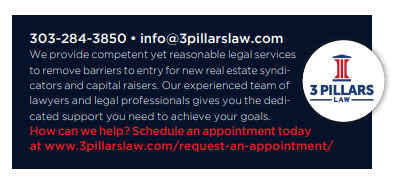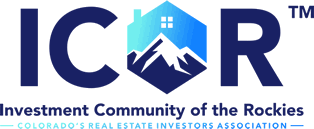How Do Sponsors Raise Capital?
Raising capital is often one of the most important parts of real estate syndications, since it is the proverbial fuel to the fire. As such, it is important for investors to understand some of the most common ways in which sponsors can raise capital. For more information about sponsors and the basic structures of real estate syndications, please see the previous article titled “What is a Real Estate Syndication?”.
Sponsors can raise capital from investors in a variety of ways, including private placements, crowdfunding, and other registered securities offerings. Securities offerings are regulated by the Securities and Exchange Commission (the “SEC”), and sponsors must comply with SEC regulations to raise capital through such offerings.
While there are numerous ways for sponsors to raise capital, the most common offering investors will see are 506(b) and 506(c) offerings, which are both contained in Regulation D of the Securities Act of 1933 and act as safe harbors under Section 4(a)(2) of the Securities Act, which requires registration of securities prior to sale.
506(b) Offerings
506(b) offerings have no limits on either the total amount raised or the total amount each investor can invest. In addition, accredited and up to 35 non-accredited investors can invest in a 506(b) offering, so long as the non-accredited investors are sophisticated. Sophisticated investors are those that are defined as those investors that have “such knowledge and experience in financial and business matters that they are capable of evaluating the merits and risks of the prospective investment.”
To assess whether investors are accredited or non-accredited, sponsors may allow the investors to self-certify that they are accredited or non-accredited, provided that the sponsor does not have a reasonable belief runs contrary to the self-certification information.
If non-accredited investors participate in a 506(b) offering in which the offering amount is $20 million or below (in gross proceeds), the sponsor will only have to provide unaudited financial statements to each investor, and any other information required to be provided in accordance with the disclosure requirements for Tier I Regulation A offerings. However, if non-accredited investors participate in a 506(b) offering in which the offering amount is more than $20 million (in gross proceeds), the sponsor will have to provide audited financial statements, as well as any other information required to be provided in accordance with the disclosure requirements for Tier II Regulation A offerings.
If a 506(b) offering contains exclusively accredited investors, there are no explicit disclosure requirements, although sponsors must provide all material information are incentivized to provide as much documentation to investors as possible to avoid any liability under the anti-fraud provisions of the federal securities laws. However, whatever documentation the sponsor decides to provide to the non-accredited investors must also be provided to the accredited investors. Regardless, sponsors will need to provide the private placement memorandum (the “PPM”) to each investor, which includes a business plan, other details of the deal, and the potential risks of investing.
One of the most notable characteristics of 506(b) offerings is that it prohibits general solicitation or advertising. This means that a sponsor cannot freely advertise their deal to the public, whether that be on social media, in-person, on a podcast, via mail, etc. However, marketing efforts are allowed only if such efforts are directed towards investors with whom the sponsor has a “substantial, pre-existing relationship.” A substantial, pre-existing relationship involves a relationship between the sponsor and a prospective investor that was cultivated prior to the commencement of an offering, in which the sponsor has acquired significant information from the prospective investor such that the sponsor can evaluate, and has in fact evaluated, the prospective investor’s financial circumstances and sophistication, in determining their status as an accredited and sophisticated investor. This is, however, a very convoluted topic and in order to break it down fully, the details of the general solicitation provisions under Regulation D shall be addressed in a later article.
506(c) Offerings
506(c) offerings are similar to 506(b) offerings in that there are no limits on either the total amount raised or the total amount each investor can put into a deal. However, that is pretty much the only similarity between these two types of offerings.
As opposed to 506(b) offerings which can contain both accredited and non-accredited investors, only accredited investors can invest in 506(c) offerings. In addition, sponsors conducting a 506(c) offering must take reasonable steps to verify whether investors are “accredited” within Sections 215 and 501 of the Securities Act of 1933; investors cannot self-certify as an accredited investor in a 506(c) offering. In a 506(c) offering, the SEC allows sponsors to verify an investor’s accredited status by one of three methods:
- reviewing the investor’s prior two years’ income tax returns and obtaining written investor certification that the investor reasonably expects to meet the required income level ($200,000 for an individual and $300,000 joint income with a spouse or spousal equivalent) again in the current year;
- reviewing recent (within the last 3 months) verification of the investor’s assets via bank or brokerage statements, appraisal reports, or similar documents and verify liabilities via a credit report; or
- obtaining written confirmation from the investor’s broker-dealer, investment advisor, attorney, or CPA that the investor is meets the definition of an “accredited investor” based upon information verified within the last three months.
The biggest distinguishing factor between 506(b) and 506(c) offerings, as well as the most attractive for sponsors, is that sponsors conducting a 506(c) offering can engage in general advertising for their deal. Unlike a 506(b) offering, a sponsor engaging in a 506(c) offering can freely advertise their deal, whether that be on social media, a website, a podcast, in-person conversations, etc. To be safe however, sponsors should have a reasonable, good faith belief that their audience, regardless of advertising medium, consists of accredited investors. As mentioned earlier, there are details to these general solicitation provisions, which shall be addressed in a later article.
506(b) and 506(c) Filing Requirements
Whether the choice is a 506(b) or a 506(c) offering, sponsors have an obligation to notify the SEC that the sponsor is conducting a private offering of securities under Regulation D. This notification takes the form of the Form D, which is required to be filed with the SEC within 15 calendar days of the date of first sale, which is the date in which the first investor is irrevocably committed to invest (ex: signing the subscription agreement), or the date in which the first investor transfers funds to the sponsor. Additionally, sponsors have an ongoing duty to make blue sky filings, or state filings, in each state in which an investor is a resident in, within 15 days of the first sale in that state.
Penalties for Failing to Adhere to Regulation D Requirements
If a sponsor elects to conduct a 506(b) offering and subsequently fails to comply with each of the requirements, what will happen?
The sponsor could face criminal or civil lawsuits from the SEC or state governments, depending on the nature of the violation, as well as civil lawsuits from investors. Incarceration may be possible depending on the severity of the offense. Subsequently, the sponsor, or any individual principal, if convicted of such a violation, could be barred from future capital raising under exemptions from registration, such as 506(b) and (c) of Regulation D, or, at the minimum, be required to disclose such violations in future deals.
In addition to legal action, investors, under federal and state law, have a right of rescission which they can exercise in the event the sponsor violates any of the applicable requirements under Regulation D. Investors exercising their right of rescission forces the sponsor to return the offering proceeds to investors, plus interest.
Conclusion
506(b) and 506(c) offerings are the most common ways in which real estate operators raise capital to deploy towards both large and small-scale development and value-add projects. Investors should acquaint themselves with the requirements of both types of offerings, by consulting qualified securities counsel, to assess whether the sponsor is complying with all applicable rules and regulations and how such compliance, or lack thereof, may impact a potential investment in the deal.

